Biography
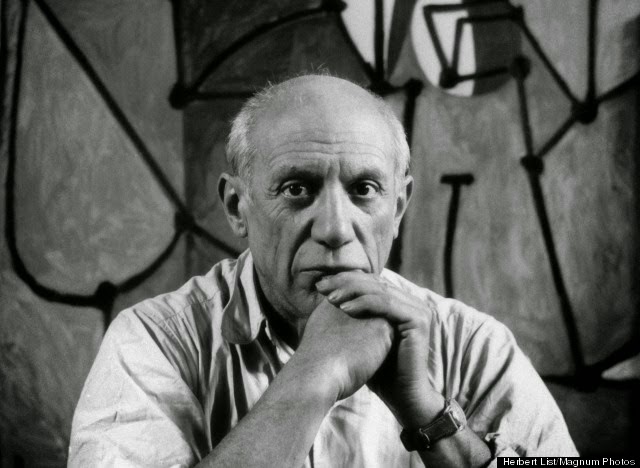
Pablo Ruiz y Picasso, also known as Pablo Picasso ( 25 October 1881 – 8 April 1973 ), was a Spanish painter, sculptor, printmaker, ceramicist, stage designer, poet and playwright who spent most of his adult life in France. As one of the greatest and most influential artists of the 20th century, he is known for co-founding the Cubist movement, the invention of constructed sculpture, the co-invention of collage, and for the wide variety of styles that he helped develop and explore. Among his most famous works are the proto-Cubist Les Demoiselles d'Avignon (1907), and Guernica (1937), a portrayal of the Bombing of Guernica by the German and Italian airforces at the behest of the Spanish nationalist government during the Spanish Civil War.
Picasso, Henri Matisse and Marcel Duchamp are regarded as the three artists who most defined the revolutionary developments in the plastic arts in the opening decades of the 20th century, responsible for significant developments in painting, sculpture, printmaking and ceramics.
Picasso demonstrated extraordinary artistic talent in his early years, painting in a realistic manner through his childhood and adolescence. During the first decade of the 20th century, his style changed as he experimented with different theories, techniques, and ideas. His work is often categorised into periods. While the names of many of his later periods are debated, the most commonly accepted periods in his work are the Blue Period (1901–1904), the Rose Period (1904–1906), the African-influenced Period (1907–1909), Analytic Cubism (1909–1912), and Synthetic Cubism (1912–1919).
Exceptionally prolific throughout the course of his long life, Picasso achieved universal renown and immense fortune for his revolutionary artistic accomplishments, and became one of the best-known figures in 20th-century art.
Early life
Picasso was baptised Pablo, Diego, José, Francisco de Paula, Juan Nepomuceno, Maria de los Remedios, Cipriano de la Santisima Trinidad, a series of names honouring various saints and relatives. Added to these were Ruiz and Picasso, for his father and mother, respectively, as per Spanish law. Born in the city of Málaga in the Andalusian region of Spain, he was the first child of Don José Ruiz y Blasco (1838–1913) and María Picasso y López. Despite being baptised Catholic, Picasso would later on become an atheist. Picasso's family was middle-class. His father was a painter who specialised in naturalistic depictions of birds and other game. For most of his life Ruiz was a professor of art at the School of Crafts and a curator of a local museum. Ruiz's ancestors were minor aristocrats.
Picasso showed a passion and a skill for drawing from an early age. According to his mother, his first words were "piz, piz", a shortening of lápiz, the Spanish word for "pencil". From the age of seven, Picasso received formal artistic training from his father in figure drawing and oil painting. Ruiz was a traditional academic artist and instructor, who believed that proper training required disciplined copying of the masters, and drawing the human body from plaster casts and live models. His son became preoccupied with art to the detriment of his classwork.
The family moved to A Coruña in 1891, where his father became a professor at the School of Fine Arts. They stayed almost four years. On one occasion, the father found his son painting over his unfinished sketch of a pigeon. Observing the precision of his son's technique, an apocryphal story relates, Ruiz felt that the thirteen-year-old Picasso had surpassed him, and vowed to give up painting, though paintings by him exist from later years.
In 1895, Picasso was traumatised when his seven-year-old sister, Conchita, died of diphtheria. After her death, the family moved to Barcelona, where Ruiz took a position at its School of Fine Arts. Picasso thrived in the city, regarding it in times of sadness or nostalgia as his true home. Ruiz persuaded the officials at the academy to allow his son to take an entrance exam for the advanced class. This process often took students a month, but Picasso completed it in a week, and the jury admitted him, at just 13. The student lacked discipline but made friendships that would affect him in later life. His father rented a small room for him close to home so he could work alone, yet he checked up on him numerous times a day, judging his drawings. The two argued frequently.
Picasso's father and uncle decided to send the young artist to Madrid's Royal Academy of San Fernando, the country's foremost art school. At age 16, Picasso set off for the first time on his own, but he disliked formal instruction and stopped attending classes soon after enrolment. Madrid held many other attractions. The Prado housed paintings by Diego Velázquez, Francisco Goya, and Francisco Zurbarán. Picasso especially admired the works of El Greco; elements such as his elongated limbs, arresting colours, and mystical visages are echoed in Picasso's later work.
Career beginnings
Before 1900
Picasso's training under his father began before 1890. His progress can be traced in the collection of early works now held by the Museu Picasso in Barcelona, which provides one of the most comprehensive records extant of any major artist's beginnings. During 1893 the juvenile quality of his earliest work falls away, and by 1894 his career as a painter can be said to have begun. The academic realism apparent in the works of the mid-1890s is well displayed in The First Communion (1896), a large composition that depicts his sister, Lola. In the same year, at the age of 14, he painted Portrait of Aunt Pepa, a vigorous and dramatic portrait that Juan-Eduardo Cirlot has called "without a doubt one of the greatest in the whole history of Spanish painting."
In 1897 his realism became tinged with Symbolist influence, in a series of landscape paintings rendered in non-naturalistic violet and green tones. What some call his Modernist period (1899–1900) followed. His exposure to the work of Rossetti, Steinlen, Toulouse-Lautrec and Edvard Munch, combined with his admiration for favourite old masters such as El Greco, led Picasso to a personal version of modernism in his works of this period.
Picasso made his first trip to Paris in 1900, then the art capital of Europe. There, he met his first Parisian friend, journalist and poet Max Jacob, who helped Picasso learn the language and its literature. Soon they shared an apartment; Max slept at night while Picasso slept during the day and worked at night. These were times of severe poverty, cold, and desperation. Much of his work was burned to keep the small room warm. During the first five months of 1901, Picasso lived in Madrid, where he and his anarchist friend Francisco de Asís Soler founded the magazine Arte Joven (Young Art), which published five issues. Soler solicited articles and Picasso illustrated the journal, mostly contributing grim cartoons depicting and sympathising with the state of the poor. The first issue was published on 31 March 1901, by which time the artist had started to sign his work Picasso; before he had signed Pablo Ruiz y Picasso.
Picasso's Blue Period (1901–1904), characterized by somber paintings rendered in shades of blue and blue-green, only occasionally warmed by other colours, began either in Spain in early 1901, or in Paris in the second half of the year. Many paintings of gaunt mothers with children date from the Blue Period, during which Picasso divided his time between Barcelona and Paris. In his austere use of color and sometimes doleful subject matter – prostitutes and beggars are frequent subjects – Picasso was influenced by a trip through Spain and by the suicide of his friend Carlos Casagemas. Starting in autumn of 1901 he painted several posthumous portraits of Casagemas, culminating in the gloomy allegorical painting La Vie (1903), now in the Cleveland Museum of Art.
Infrared imagery of Picasso's 1901 painting The Blue Room reveals another painting beneath the surface.
The same mood pervades the well-known etching The Frugal Repast (1904), which depicts a blind man and a sighted woman, both emaciated, seated at a nearly bare table. Blindness is a recurrent theme in Picasso's works of this period, also represented in The Blindman's Meal (1903, the Metropolitan Museum of Art) and in the portrait of Celestina (1903). Other works include Portrait of Soler and Portrait of Suzanne Bloch.
The Rose Period (1904–1906) is characterised by a more cheery style with orange and pink colours, and featuring many circus people, acrobats and harlequins known in France as saltimbanques. The harlequin, a comedic character usually depicted in checkered patterned clothing, became a personal symbol for Picasso. Picasso met Fernande Olivier, a bohemian artist who became his mistress, in Paris in 1904. Olivier appears in many of his Rose Period paintings, many of which are influenced by his warm relationship with her, in addition to his increased exposure to French painting. The generally upbeat and optimistic mood of paintings in this period is reminiscent of the 1899–1901 period (i.e. just prior to the Blue Period) and 1904 can be considered a transition year between the two periods.
By 1905, Picasso became a favourite of American art collectors Leo and Gertrude Stein. Their older brother Michael Stein and his wife Sarah also became collectors of his work. Picasso painted portraits of both Gertrude Stein and her nephew Allan Stein. Gertrude Stein became Picasso's principal patron, acquiring his drawings and paintings and exhibiting them in her informal Salon at her home in Paris. At one of her gatherings in 1905, he met Henri Matisse, who was to become a lifelong friend and rival. The Steins introduced him to Claribel Cone and her sister Etta who were American art collectors; they also began to acquire Picasso and Matisse's paintings. Eventually Leo Stein moved to Italy. Michael and Sarah Stein became patrons of Matisse, while Gertrude Stein continued to collect Picasso.
In 1907 Picasso joined an art gallery that had recently been opened in Paris by Daniel-Henry Kahnweiler. Kahnweiler was a German art historian and art collector who became one of the premier French art dealers of the 20th century. He was among the first champions of Pablo Picasso, Georges Braque and the Cubism that they jointly developed. Kahnweiler promoted burgeoning artists such as André Derain, Kees van Dongen, Fernand Léger, Juan Gris, Maurice de Vlaminck and several others who had come from all over the globe to live and work in Montparnasse at the time.
Cubism
Analytic cubism (1909–1912) is a style of painting Picasso developed with Georges Braque using monochrome brownish and neutral colours. Both artists took apart objects and "analyzed" them in terms of their shapes. Picasso and Braque's paintings at this time share many similarities. Synthetic cubism (1912–1919) was a further development of the genre, in which cut paper fragments – often wallpaper or portions of newspaper pages – were pasted into compositions, marking the first use of collage in fine art.
In Paris, Picasso entertained a distinguished coterie of friends in the Montmartre and Montparnasse quarters, including André Breton, poet Guillaume Apollinaire, writer Alfred Jarry, and Gertrude Stein. Apollinaire was arrested on suspicion of stealing the Mona Lisa from the Louvre in 1911. Apollinaire pointed to his friend Picasso, who was also brought in for questioning, but both were later exonerated.
Fame
After acquiring some fame and fortune, Picasso left Olivier for Marcelle Humbert, who he called Eva Gouel. Picasso included declarations of his love for Eva in many Cubist works. Picasso was devastated by her premature death from illness at the age of 30 in 1915.
At the outbreak of World War I (August 1914) Picasso lived in Avignon. Braque and Derain were mobilized and Apollinaire joined the French artillery, while the Spaniard Juan Gris remained from the Cubist circle. During the war Picasso was able to continue painting uninterrupted, unlike his French comrades. His paintings became more sombre and his life changed with dramatic consequences. Kahnweiler’s contract had terminated on his exile from France. At this point Picasso’s work would be taken on by the art dealer Léonce Rosenberg. After the loss of Eva Gouel, Picasso had an affair with Gaby Lespinasse. During the spring of 1916 Apollinaire returned from the front wounded. They renewed their friendship, but Picasso began to frequent new social circles.
Towards the end of World War I, Picasso made a number of important relationships with figures associated with Serge Diaghilev's Ballets Russes. Among his friends during this period were Jean Cocteau, Jean Hugo, Juan Gris, and others. In the summer of 1918, Picasso married Olga Khokhlova, a ballerina with Sergei Diaghilev's troupe, for whom Picasso was designing a ballet, Erik Satie's Parade, in Rome; they spent their honeymoon near Biarritz in the villa of glamorous Chilean art patron Eugenia Errázuriz.
After return from honeymoon, and in desperate need of money, Picasso started his exclusive relationship with the French-Jewish art dealer Paul Rosenberg. As part of his first duties, Rosenberg agreed to rent the couple an apartment in Paris at his own expense, which was located next to his own house. This was the start of a deep brother-like friendship between two very different men, that would last until the outbreak of World War II.
Khokhlova introduced Picasso to high society, formal dinner parties, and all the social niceties attendant to the life of the rich in 1920s Paris. The two had a son, Paulo, who would grow up to be a dissolute motorcycle racer and chauffeur to his father. Khokhlova's insistence on social propriety clashed with Picasso's bohemian tendencies and the two lived in a state of constant conflict. During the same period that Picasso collaborated with Diaghilev's troupe, he and Igor Stravinsky collaborated on Pulcinella in 1920. Picasso took the opportunity to make several drawings of the composer.
In 1927 Picasso met 17-year-old Marie-Thérèse Walter and began a secret affair with her. Picasso's marriage to Khokhlova soon ended in separation rather than divorce, as French law required an even division of property in the case of divorce, and Picasso did not want Khokhlova to have half his wealth. The two remained legally married until Khokhlova's death in 1955. Picasso carried on a long-standing affair with Marie-Thérèse Walter and fathered a daughter with her, named Maya. Marie-Thérèse lived in the vain hope that Picasso would one day marry her, and hanged herself four years after Picasso's death. Throughout his life Picasso maintained several mistresses in addition to his wife or primary partner. Picasso was married twice and had four children by three women:
Paulo (4 February 1921 – 5 June 1975) (Born Paul Joseph Picasso) – with Olga Khokhlova
Maya (5 September 1935 – ) (Born Maria de la Concepcion Picasso) – with Marie-Thérèse Walter
Claude (15 May 1947 –) (Born Claude Pierre Pablo Picasso) – with Françoise Gilot
Paloma (19 April 1949 – ) (Born Anne Paloma Picasso) – with Françoise Gilot
Photographer and painter Dora Maar was also a constant companion and lover of Picasso. The two were closest in the late 1930s and early 1940s, and it was Maar who documented the painting of Guernica.
Classicism and surrealism
In February 1917, Picasso made his first trip to Italy. In the period following the upheaval of World War I, Picasso produced work in a neoclassical style. This "return to order" is evident in the work of many European artists in the 1920s, including André Derain, Giorgio de Chirico, Gino Severini, Jean Metzinger, the artists of the New Objectivity movement and of the Novecento Italiano movement. Picasso's paintings and drawings from this period frequently recall the work of Raphael and Ingres.
In 1925 the Surrealist writer and poet André Breton declared Picasso as 'one of ours' in his article Le Surréalisme et la peinture, published in Révolution surréaliste. Les Demoiselles was reproduced for the first time in Europe in the same issue. Yet Picasso exhibited Cubist works at the first Surrealist group exhibition in 1925; the concept of 'psychic automatism in its pure state' defined in the Manifeste du surréalisme never appealed to him entirely. He did at the time develop new imagery and formal syntax for expressing himself emotionally, "releasing the violence, the psychic fears and the eroticism that had been largely contained or sublimated since 1909", writes art historian Melissa McQuillan. Although this transition in Picasso's work was informed by Cubism for its spatial relations, "the fusion of ritual and abandon in the imagery recalls the primitivism of the Demoiselles and the elusive psychological resonances of his Symbolist work", writes McQuillan. Surrealism revived Picasso’s attraction to primitivism and eroticism.
During the 1930s, the minotaur replaced the harlequin as a common motif in his work. His use of the minotaur came partly from his contact with the surrealists, who often used it as their symbol, and it appears in Picasso's Guernica. The minotaur and Picasso's mistress Marie-Thérèse Walter are heavily featured in his celebrated Vollard Suite of etchings.
In 1939–40 the Museum of Modern Art in New York City, under its director Alfred Barr, a Picasso enthusiast, held a major retrospective of Picasso's principal works until that time. This exhibition lionised the artist, brought into full public view in America the scope of his artistry, and resulted in a reinterpretation of his work by contemporary art historians and scholars.
Arguably Picasso's most famous work is his depiction of the German bombing of Guernica during the Spanish Civil War – Guernica. This large canvas embodies for many the inhumanity, brutality and hopelessness of war. Asked to explain its symbolism, Picasso said, "It isn't up to the painter to define the symbols. Otherwise it would be better if he wrote them out in so many words! The public who look at the picture must interpret the symbols as they understand them."
Later works
The Chicago Picasso a 50-foot high public Cubist sculpture. Donated by Picasso to the people of Chicago
Picasso was one of 250 sculptors who exhibited in the 3rd Sculpture International held at the Philadelphia Museum of Art in mid-1949. In the 1950s, Picasso's style changed once again, as he took to producing reinterpretations of the art of the great masters. He made a series of works based on Velázquez's painting of Las Meninas. He also based paintings on works by Goya, Poussin, Manet, Courbet and Delacroix.
He was commissioned to make a maquette for a huge 50-foot (15 m)-high public sculpture to be built in Chicago, known usually as the Chicago Picasso. He approached the project with a great deal of enthusiasm, designing a sculpture which was ambiguous and somewhat controversial. What the figure represents is not known; it could be a bird, a horse, a woman or a totally abstract shape. The sculpture, one of the most recognisable landmarks in downtown Chicago, was unveiled in 1967. Picasso refused to be paid $100,000 for it, donating it to the people of the city.
Picasso's final works were a mixture of styles, his means of expression in constant flux until the end of his life. Devoting his full energies to his work, Picasso became more daring, his works more colourful and expressive, and from 1968 to 1971 he produced a torrent of paintings and hundreds of copperplate etchings. At the time these works were dismissed by most as pornographic fantasies of an impotent old man or the slapdash works of an artist who was past his prime. Only later, after Picasso's death, when the rest of the art world had moved on from abstract expressionism, did the critical community come to see that Picasso had already discovered neo-expressionism and was, as so often before, ahead of his time.
Death
Pablo Picasso died on 8 April 1973 in Mougins, France, while he and his wife Jacqueline entertained friends for dinner. He was interred at the Chateau of Vauvenargues near Aix-en-Provence, a property he had acquired in 1958 and occupied with Jacqueline between 1959 and 1962. Jacqueline Roque prevented his children Claude and Paloma from attending the funeral. Devastated and lonely after the death of Picasso, Jacqueline Roque killed herself by gunshot in 1986 when she was 59 years old.
Style and technique
Picasso was exceptionally prolific throughout his long lifetime. The total number of artworks he produced has been estimated at 50,000, comprising 1,885 paintings; 1,228 sculptures; 2,880 ceramics, roughly 12,000 drawings, many thousands of prints, and numerous tapestries and rugs.
The medium in which Picasso made his most important contribution was painting. In his paintings, Picasso used color as an expressive element, but relied on drawing rather than subtleties of color to create form and space. He sometimes added sand to his paint to vary its texture. A nanoprobe of Picasso's The Red Armchair (1931) by physicists at Argonne National Laboratory in 2012 confirmed art historians' belief that Picasso used common house paint in many of his paintings. Much of his painting was done at night by artificial light.
Picasso's early sculptures were carved from wood or modeled in wax or clay, but from 1909 to 1928 Picasso abandoned modeling and instead made sculptural constructions using diverse materials. An example is Guitar (1912), a relief construction made of sheet metal and wire that Jane Fluegel terms a "three-dimensional planar counterpart of Cubist painting" that marks a "revolutionary departure from the traditional approaches, modeling and carving".
From the beginning of his career, Picasso displayed an interest in subject matter of every kind, and demonstrated a great stylistic versatility that enabled him to work in several styles at once. For example, his paintings of 1917 included the pointillist Woman with a Mantilla, the Cubist Figure in an Armchair, and the naturalistic Harlequin (all in the Museu Picasso, Barcelona). In 1919, he made a number of drawings from postcards and photographs that reflect his interest in the stylistic conventions and static character of posed photographs. In 1921 he simultaneously painted several large neoclassical paintings and two versions of the Cubist composition Three Musicians (Museum of Modern Art, New York; Philadelphia Museum of Art). In an interview published in 1923, Picasso said, "The several manners I have used in my art must not be considered as an evolution, or as steps towards an unknown ideal of painting ... If the subjects I have wanted to express have suggested different ways of expression I have never hesitated to adopt them."
Although his Cubist works approach abstraction, Picasso never relinquished the objects of the real world as subject matter. Prominent in his Cubist paintings are forms easily recognized as guitars, violins, and bottles. When Picasso depicted complex narrative scenes it was usually in prints, drawings, and small-scale works; Guernica (1937) is one of his few large narrative paintings.
Picasso painted mostly from imagination or memory. According to William Rubin, Picasso "could only make great art from subjects that truly involved him ... Unlike Matisse, Picasso had eschewed models virtually all his mature life, preferring to paint individuals whose lives had both impinged on, and had real significance for, his own." The art critic Arthur Danto said Picasso's work constitutes a "vast pictorial autobiography" that provides some basis for the popular conception that "Picasso invented a new style each time he fell in love with a new woman". The autobiographical nature of Picasso's art is reinforced by his habit of dating his works, often to the day. He explained: "I want to leave to posterity a documentation that will be as complete as possible. That's why I put a date on everything I do."
Reference Wikipedia
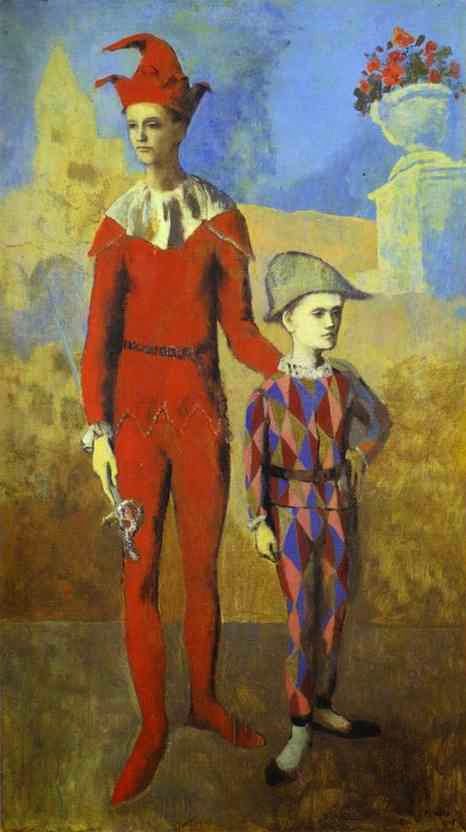
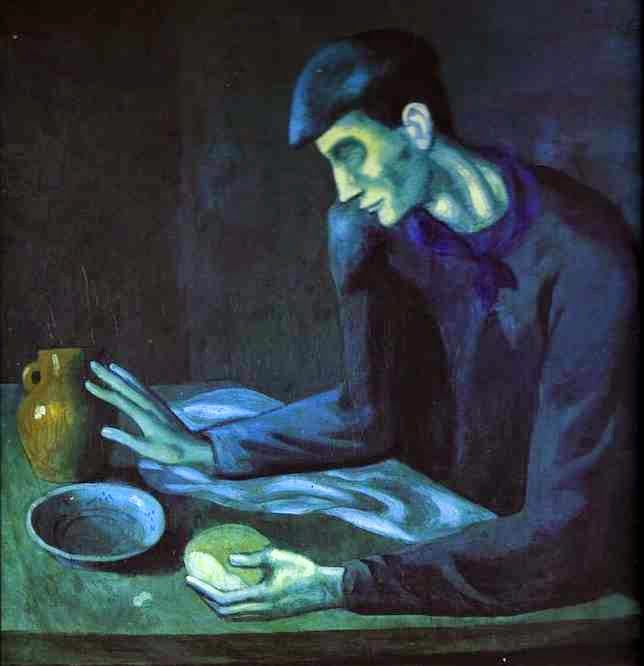
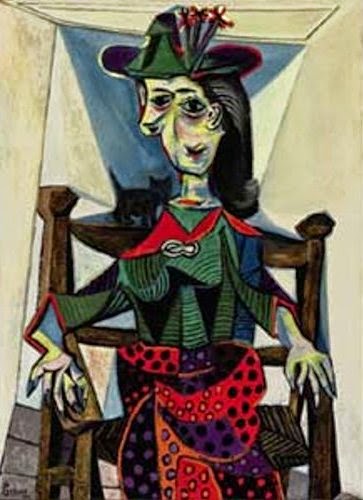
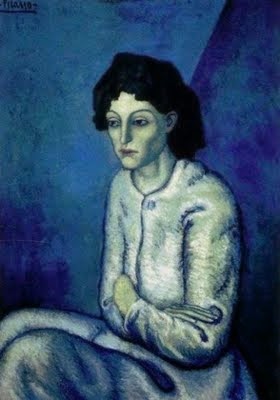
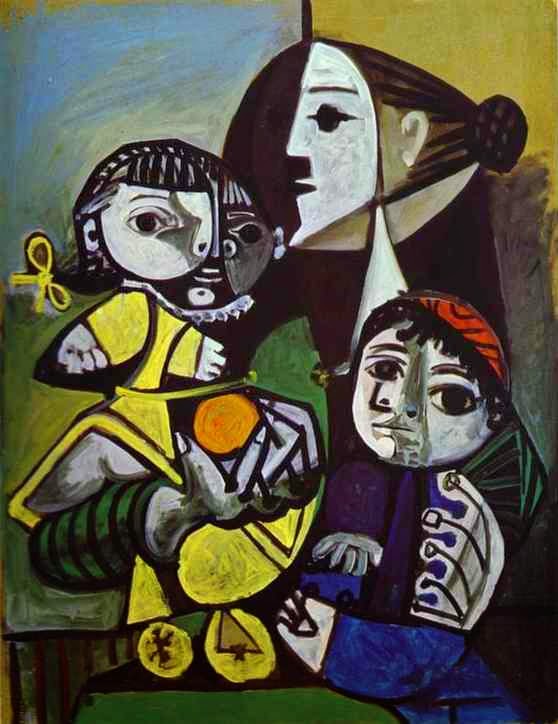
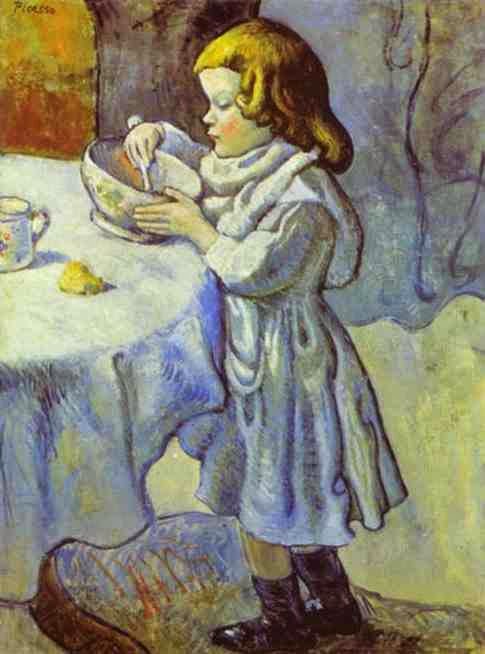
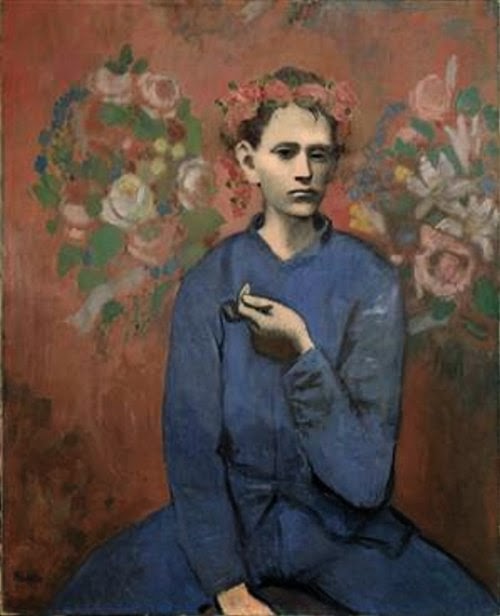
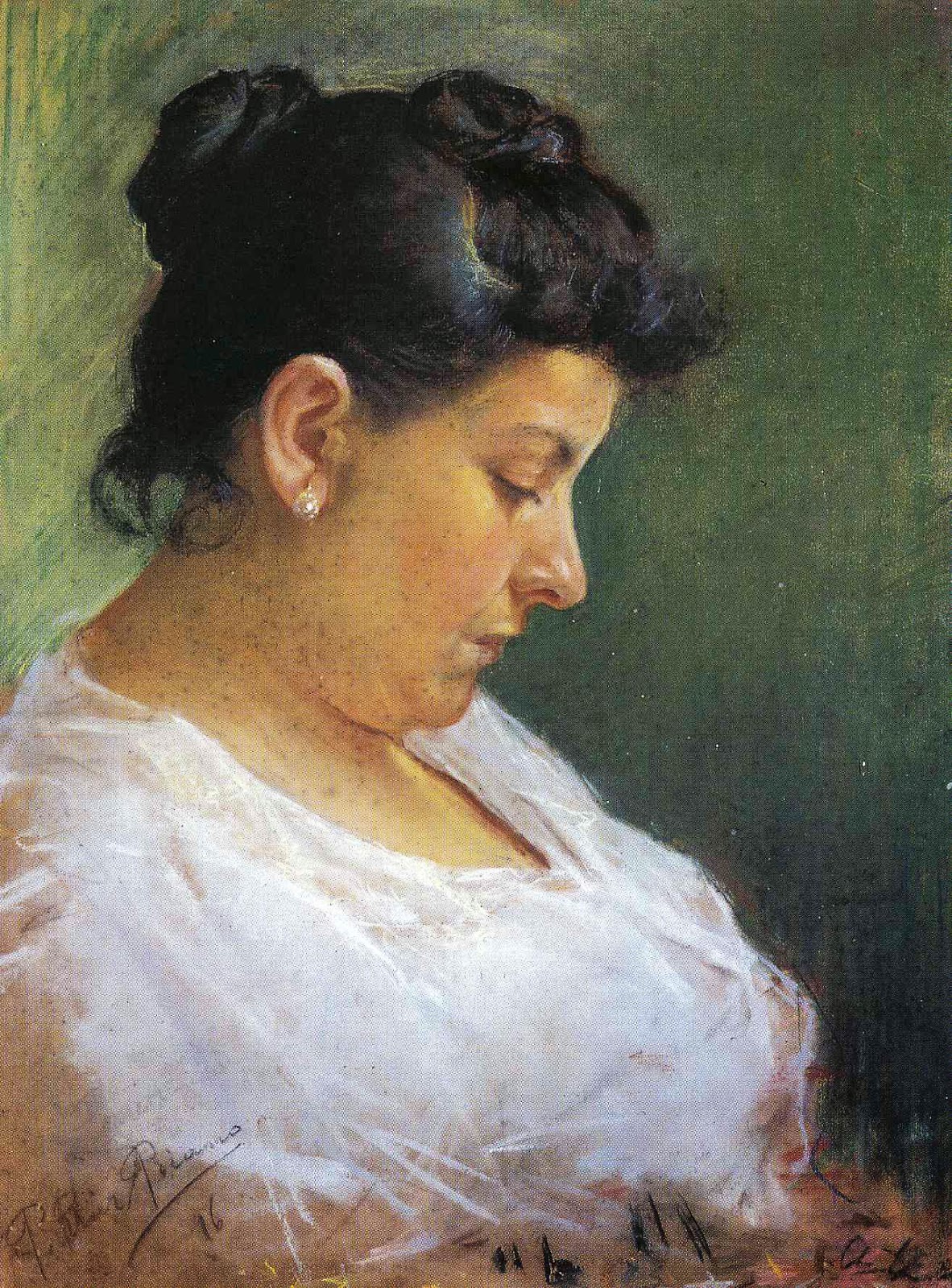
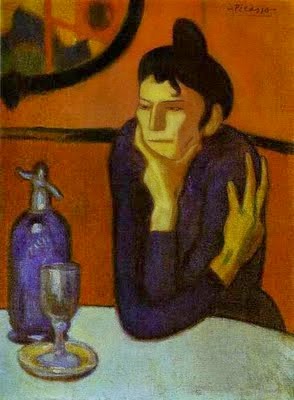
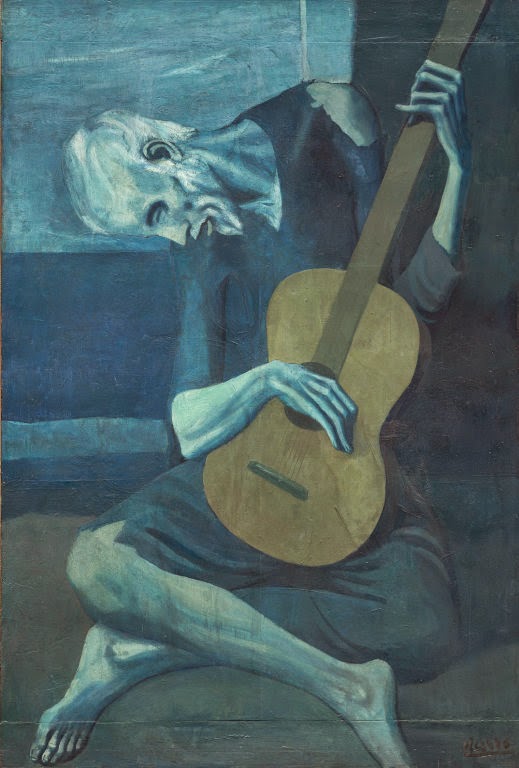
- Ilya Ehrenburg
Ilya Grigoryevich Ehrenburg (Russian: ????? ???????????? ????????? IPA: [??l?ja gr???gor??v?t? ?r??n?burk]), January 27 [O.S. January 15] 1891 (Kiev, Ukraine) ? August 31, 1967 (Moscow, Soviet Union) was a Jewish Soviet propagandist, writer and journalist...
- >> Biography Of Salvador Dali
Salvador Domingo Felipe Jacinto Dalí i Domènech, 1st Marqués de Dalí de Pubol (May 11, 1904 – January 23, 1989), known as Salvador Dalí, was a prominent Spanish surrealist painter born in Figueres, Spain. Dalí was a skilled draftsman, best known...
- >> Biography Of Paul Cézanne
Paul Cézanne ( 1839–1906) was a French artist and Post-Impressionist painter whose work laid the foundations of the transition from the 19th-century conception of artistic endeavour to a new and radically different world of art in the 20th century....
- >> Biography Of Gustav Klimt
Gustav Klimt (July 14, 1862 – February 6, 1918) was an Austrian symbolist painter and one of the most prominent members of the Vienna Secession movement. Klimt is noted for his paintings, murals, sketches, and other objets d'art. Klimt's primary...
- >> Biography Of Edgar Degas
Edgar Degas ( born Hilaire-Germain-Edgar De Gas; 19 July 1834 – 27 September 1917 ) was a French artist famous for his paintings, sculptures, prints, and drawings. He is especially identified with the subject of dance; more than half of his works depict...
Biography
>> Biography of Pablo Picasso

Picasso, Henri Matisse and Marcel Duchamp are regarded as the three artists who most defined the revolutionary developments in the plastic arts in the opening decades of the 20th century, responsible for significant developments in painting, sculpture, printmaking and ceramics.
Picasso demonstrated extraordinary artistic talent in his early years, painting in a realistic manner through his childhood and adolescence. During the first decade of the 20th century, his style changed as he experimented with different theories, techniques, and ideas. His work is often categorised into periods. While the names of many of his later periods are debated, the most commonly accepted periods in his work are the Blue Period (1901–1904), the Rose Period (1904–1906), the African-influenced Period (1907–1909), Analytic Cubism (1909–1912), and Synthetic Cubism (1912–1919).
Exceptionally prolific throughout the course of his long life, Picasso achieved universal renown and immense fortune for his revolutionary artistic accomplishments, and became one of the best-known figures in 20th-century art.
Early life
Picasso was baptised Pablo, Diego, José, Francisco de Paula, Juan Nepomuceno, Maria de los Remedios, Cipriano de la Santisima Trinidad, a series of names honouring various saints and relatives. Added to these were Ruiz and Picasso, for his father and mother, respectively, as per Spanish law. Born in the city of Málaga in the Andalusian region of Spain, he was the first child of Don José Ruiz y Blasco (1838–1913) and María Picasso y López. Despite being baptised Catholic, Picasso would later on become an atheist. Picasso's family was middle-class. His father was a painter who specialised in naturalistic depictions of birds and other game. For most of his life Ruiz was a professor of art at the School of Crafts and a curator of a local museum. Ruiz's ancestors were minor aristocrats.
Picasso showed a passion and a skill for drawing from an early age. According to his mother, his first words were "piz, piz", a shortening of lápiz, the Spanish word for "pencil". From the age of seven, Picasso received formal artistic training from his father in figure drawing and oil painting. Ruiz was a traditional academic artist and instructor, who believed that proper training required disciplined copying of the masters, and drawing the human body from plaster casts and live models. His son became preoccupied with art to the detriment of his classwork.
The family moved to A Coruña in 1891, where his father became a professor at the School of Fine Arts. They stayed almost four years. On one occasion, the father found his son painting over his unfinished sketch of a pigeon. Observing the precision of his son's technique, an apocryphal story relates, Ruiz felt that the thirteen-year-old Picasso had surpassed him, and vowed to give up painting, though paintings by him exist from later years.
In 1895, Picasso was traumatised when his seven-year-old sister, Conchita, died of diphtheria. After her death, the family moved to Barcelona, where Ruiz took a position at its School of Fine Arts. Picasso thrived in the city, regarding it in times of sadness or nostalgia as his true home. Ruiz persuaded the officials at the academy to allow his son to take an entrance exam for the advanced class. This process often took students a month, but Picasso completed it in a week, and the jury admitted him, at just 13. The student lacked discipline but made friendships that would affect him in later life. His father rented a small room for him close to home so he could work alone, yet he checked up on him numerous times a day, judging his drawings. The two argued frequently.
Picasso's father and uncle decided to send the young artist to Madrid's Royal Academy of San Fernando, the country's foremost art school. At age 16, Picasso set off for the first time on his own, but he disliked formal instruction and stopped attending classes soon after enrolment. Madrid held many other attractions. The Prado housed paintings by Diego Velázquez, Francisco Goya, and Francisco Zurbarán. Picasso especially admired the works of El Greco; elements such as his elongated limbs, arresting colours, and mystical visages are echoed in Picasso's later work.
Career beginnings
Before 1900
Picasso's training under his father began before 1890. His progress can be traced in the collection of early works now held by the Museu Picasso in Barcelona, which provides one of the most comprehensive records extant of any major artist's beginnings. During 1893 the juvenile quality of his earliest work falls away, and by 1894 his career as a painter can be said to have begun. The academic realism apparent in the works of the mid-1890s is well displayed in The First Communion (1896), a large composition that depicts his sister, Lola. In the same year, at the age of 14, he painted Portrait of Aunt Pepa, a vigorous and dramatic portrait that Juan-Eduardo Cirlot has called "without a doubt one of the greatest in the whole history of Spanish painting."
In 1897 his realism became tinged with Symbolist influence, in a series of landscape paintings rendered in non-naturalistic violet and green tones. What some call his Modernist period (1899–1900) followed. His exposure to the work of Rossetti, Steinlen, Toulouse-Lautrec and Edvard Munch, combined with his admiration for favourite old masters such as El Greco, led Picasso to a personal version of modernism in his works of this period.
Picasso made his first trip to Paris in 1900, then the art capital of Europe. There, he met his first Parisian friend, journalist and poet Max Jacob, who helped Picasso learn the language and its literature. Soon they shared an apartment; Max slept at night while Picasso slept during the day and worked at night. These were times of severe poverty, cold, and desperation. Much of his work was burned to keep the small room warm. During the first five months of 1901, Picasso lived in Madrid, where he and his anarchist friend Francisco de Asís Soler founded the magazine Arte Joven (Young Art), which published five issues. Soler solicited articles and Picasso illustrated the journal, mostly contributing grim cartoons depicting and sympathising with the state of the poor. The first issue was published on 31 March 1901, by which time the artist had started to sign his work Picasso; before he had signed Pablo Ruiz y Picasso.
Picasso's Blue Period (1901–1904), characterized by somber paintings rendered in shades of blue and blue-green, only occasionally warmed by other colours, began either in Spain in early 1901, or in Paris in the second half of the year. Many paintings of gaunt mothers with children date from the Blue Period, during which Picasso divided his time between Barcelona and Paris. In his austere use of color and sometimes doleful subject matter – prostitutes and beggars are frequent subjects – Picasso was influenced by a trip through Spain and by the suicide of his friend Carlos Casagemas. Starting in autumn of 1901 he painted several posthumous portraits of Casagemas, culminating in the gloomy allegorical painting La Vie (1903), now in the Cleveland Museum of Art.
Infrared imagery of Picasso's 1901 painting The Blue Room reveals another painting beneath the surface.
The same mood pervades the well-known etching The Frugal Repast (1904), which depicts a blind man and a sighted woman, both emaciated, seated at a nearly bare table. Blindness is a recurrent theme in Picasso's works of this period, also represented in The Blindman's Meal (1903, the Metropolitan Museum of Art) and in the portrait of Celestina (1903). Other works include Portrait of Soler and Portrait of Suzanne Bloch.
The Rose Period (1904–1906) is characterised by a more cheery style with orange and pink colours, and featuring many circus people, acrobats and harlequins known in France as saltimbanques. The harlequin, a comedic character usually depicted in checkered patterned clothing, became a personal symbol for Picasso. Picasso met Fernande Olivier, a bohemian artist who became his mistress, in Paris in 1904. Olivier appears in many of his Rose Period paintings, many of which are influenced by his warm relationship with her, in addition to his increased exposure to French painting. The generally upbeat and optimistic mood of paintings in this period is reminiscent of the 1899–1901 period (i.e. just prior to the Blue Period) and 1904 can be considered a transition year between the two periods.
By 1905, Picasso became a favourite of American art collectors Leo and Gertrude Stein. Their older brother Michael Stein and his wife Sarah also became collectors of his work. Picasso painted portraits of both Gertrude Stein and her nephew Allan Stein. Gertrude Stein became Picasso's principal patron, acquiring his drawings and paintings and exhibiting them in her informal Salon at her home in Paris. At one of her gatherings in 1905, he met Henri Matisse, who was to become a lifelong friend and rival. The Steins introduced him to Claribel Cone and her sister Etta who were American art collectors; they also began to acquire Picasso and Matisse's paintings. Eventually Leo Stein moved to Italy. Michael and Sarah Stein became patrons of Matisse, while Gertrude Stein continued to collect Picasso.
In 1907 Picasso joined an art gallery that had recently been opened in Paris by Daniel-Henry Kahnweiler. Kahnweiler was a German art historian and art collector who became one of the premier French art dealers of the 20th century. He was among the first champions of Pablo Picasso, Georges Braque and the Cubism that they jointly developed. Kahnweiler promoted burgeoning artists such as André Derain, Kees van Dongen, Fernand Léger, Juan Gris, Maurice de Vlaminck and several others who had come from all over the globe to live and work in Montparnasse at the time.
Cubism
Analytic cubism (1909–1912) is a style of painting Picasso developed with Georges Braque using monochrome brownish and neutral colours. Both artists took apart objects and "analyzed" them in terms of their shapes. Picasso and Braque's paintings at this time share many similarities. Synthetic cubism (1912–1919) was a further development of the genre, in which cut paper fragments – often wallpaper or portions of newspaper pages – were pasted into compositions, marking the first use of collage in fine art.
In Paris, Picasso entertained a distinguished coterie of friends in the Montmartre and Montparnasse quarters, including André Breton, poet Guillaume Apollinaire, writer Alfred Jarry, and Gertrude Stein. Apollinaire was arrested on suspicion of stealing the Mona Lisa from the Louvre in 1911. Apollinaire pointed to his friend Picasso, who was also brought in for questioning, but both were later exonerated.
Fame
After acquiring some fame and fortune, Picasso left Olivier for Marcelle Humbert, who he called Eva Gouel. Picasso included declarations of his love for Eva in many Cubist works. Picasso was devastated by her premature death from illness at the age of 30 in 1915.
At the outbreak of World War I (August 1914) Picasso lived in Avignon. Braque and Derain were mobilized and Apollinaire joined the French artillery, while the Spaniard Juan Gris remained from the Cubist circle. During the war Picasso was able to continue painting uninterrupted, unlike his French comrades. His paintings became more sombre and his life changed with dramatic consequences. Kahnweiler’s contract had terminated on his exile from France. At this point Picasso’s work would be taken on by the art dealer Léonce Rosenberg. After the loss of Eva Gouel, Picasso had an affair with Gaby Lespinasse. During the spring of 1916 Apollinaire returned from the front wounded. They renewed their friendship, but Picasso began to frequent new social circles.
Towards the end of World War I, Picasso made a number of important relationships with figures associated with Serge Diaghilev's Ballets Russes. Among his friends during this period were Jean Cocteau, Jean Hugo, Juan Gris, and others. In the summer of 1918, Picasso married Olga Khokhlova, a ballerina with Sergei Diaghilev's troupe, for whom Picasso was designing a ballet, Erik Satie's Parade, in Rome; they spent their honeymoon near Biarritz in the villa of glamorous Chilean art patron Eugenia Errázuriz.
After return from honeymoon, and in desperate need of money, Picasso started his exclusive relationship with the French-Jewish art dealer Paul Rosenberg. As part of his first duties, Rosenberg agreed to rent the couple an apartment in Paris at his own expense, which was located next to his own house. This was the start of a deep brother-like friendship between two very different men, that would last until the outbreak of World War II.
Khokhlova introduced Picasso to high society, formal dinner parties, and all the social niceties attendant to the life of the rich in 1920s Paris. The two had a son, Paulo, who would grow up to be a dissolute motorcycle racer and chauffeur to his father. Khokhlova's insistence on social propriety clashed with Picasso's bohemian tendencies and the two lived in a state of constant conflict. During the same period that Picasso collaborated with Diaghilev's troupe, he and Igor Stravinsky collaborated on Pulcinella in 1920. Picasso took the opportunity to make several drawings of the composer.
In 1927 Picasso met 17-year-old Marie-Thérèse Walter and began a secret affair with her. Picasso's marriage to Khokhlova soon ended in separation rather than divorce, as French law required an even division of property in the case of divorce, and Picasso did not want Khokhlova to have half his wealth. The two remained legally married until Khokhlova's death in 1955. Picasso carried on a long-standing affair with Marie-Thérèse Walter and fathered a daughter with her, named Maya. Marie-Thérèse lived in the vain hope that Picasso would one day marry her, and hanged herself four years after Picasso's death. Throughout his life Picasso maintained several mistresses in addition to his wife or primary partner. Picasso was married twice and had four children by three women:
Paulo (4 February 1921 – 5 June 1975) (Born Paul Joseph Picasso) – with Olga Khokhlova
Maya (5 September 1935 – ) (Born Maria de la Concepcion Picasso) – with Marie-Thérèse Walter
Claude (15 May 1947 –) (Born Claude Pierre Pablo Picasso) – with Françoise Gilot
Paloma (19 April 1949 – ) (Born Anne Paloma Picasso) – with Françoise Gilot
Photographer and painter Dora Maar was also a constant companion and lover of Picasso. The two were closest in the late 1930s and early 1940s, and it was Maar who documented the painting of Guernica.
Classicism and surrealism
In February 1917, Picasso made his first trip to Italy. In the period following the upheaval of World War I, Picasso produced work in a neoclassical style. This "return to order" is evident in the work of many European artists in the 1920s, including André Derain, Giorgio de Chirico, Gino Severini, Jean Metzinger, the artists of the New Objectivity movement and of the Novecento Italiano movement. Picasso's paintings and drawings from this period frequently recall the work of Raphael and Ingres.
In 1925 the Surrealist writer and poet André Breton declared Picasso as 'one of ours' in his article Le Surréalisme et la peinture, published in Révolution surréaliste. Les Demoiselles was reproduced for the first time in Europe in the same issue. Yet Picasso exhibited Cubist works at the first Surrealist group exhibition in 1925; the concept of 'psychic automatism in its pure state' defined in the Manifeste du surréalisme never appealed to him entirely. He did at the time develop new imagery and formal syntax for expressing himself emotionally, "releasing the violence, the psychic fears and the eroticism that had been largely contained or sublimated since 1909", writes art historian Melissa McQuillan. Although this transition in Picasso's work was informed by Cubism for its spatial relations, "the fusion of ritual and abandon in the imagery recalls the primitivism of the Demoiselles and the elusive psychological resonances of his Symbolist work", writes McQuillan. Surrealism revived Picasso’s attraction to primitivism and eroticism.
During the 1930s, the minotaur replaced the harlequin as a common motif in his work. His use of the minotaur came partly from his contact with the surrealists, who often used it as their symbol, and it appears in Picasso's Guernica. The minotaur and Picasso's mistress Marie-Thérèse Walter are heavily featured in his celebrated Vollard Suite of etchings.
In 1939–40 the Museum of Modern Art in New York City, under its director Alfred Barr, a Picasso enthusiast, held a major retrospective of Picasso's principal works until that time. This exhibition lionised the artist, brought into full public view in America the scope of his artistry, and resulted in a reinterpretation of his work by contemporary art historians and scholars.
Arguably Picasso's most famous work is his depiction of the German bombing of Guernica during the Spanish Civil War – Guernica. This large canvas embodies for many the inhumanity, brutality and hopelessness of war. Asked to explain its symbolism, Picasso said, "It isn't up to the painter to define the symbols. Otherwise it would be better if he wrote them out in so many words! The public who look at the picture must interpret the symbols as they understand them."
Later works
The Chicago Picasso a 50-foot high public Cubist sculpture. Donated by Picasso to the people of Chicago
Picasso was one of 250 sculptors who exhibited in the 3rd Sculpture International held at the Philadelphia Museum of Art in mid-1949. In the 1950s, Picasso's style changed once again, as he took to producing reinterpretations of the art of the great masters. He made a series of works based on Velázquez's painting of Las Meninas. He also based paintings on works by Goya, Poussin, Manet, Courbet and Delacroix.
He was commissioned to make a maquette for a huge 50-foot (15 m)-high public sculpture to be built in Chicago, known usually as the Chicago Picasso. He approached the project with a great deal of enthusiasm, designing a sculpture which was ambiguous and somewhat controversial. What the figure represents is not known; it could be a bird, a horse, a woman or a totally abstract shape. The sculpture, one of the most recognisable landmarks in downtown Chicago, was unveiled in 1967. Picasso refused to be paid $100,000 for it, donating it to the people of the city.
Picasso's final works were a mixture of styles, his means of expression in constant flux until the end of his life. Devoting his full energies to his work, Picasso became more daring, his works more colourful and expressive, and from 1968 to 1971 he produced a torrent of paintings and hundreds of copperplate etchings. At the time these works were dismissed by most as pornographic fantasies of an impotent old man or the slapdash works of an artist who was past his prime. Only later, after Picasso's death, when the rest of the art world had moved on from abstract expressionism, did the critical community come to see that Picasso had already discovered neo-expressionism and was, as so often before, ahead of his time.
Death
Pablo Picasso died on 8 April 1973 in Mougins, France, while he and his wife Jacqueline entertained friends for dinner. He was interred at the Chateau of Vauvenargues near Aix-en-Provence, a property he had acquired in 1958 and occupied with Jacqueline between 1959 and 1962. Jacqueline Roque prevented his children Claude and Paloma from attending the funeral. Devastated and lonely after the death of Picasso, Jacqueline Roque killed herself by gunshot in 1986 when she was 59 years old.
Style and technique
Picasso was exceptionally prolific throughout his long lifetime. The total number of artworks he produced has been estimated at 50,000, comprising 1,885 paintings; 1,228 sculptures; 2,880 ceramics, roughly 12,000 drawings, many thousands of prints, and numerous tapestries and rugs.
The medium in which Picasso made his most important contribution was painting. In his paintings, Picasso used color as an expressive element, but relied on drawing rather than subtleties of color to create form and space. He sometimes added sand to his paint to vary its texture. A nanoprobe of Picasso's The Red Armchair (1931) by physicists at Argonne National Laboratory in 2012 confirmed art historians' belief that Picasso used common house paint in many of his paintings. Much of his painting was done at night by artificial light.
Picasso's early sculptures were carved from wood or modeled in wax or clay, but from 1909 to 1928 Picasso abandoned modeling and instead made sculptural constructions using diverse materials. An example is Guitar (1912), a relief construction made of sheet metal and wire that Jane Fluegel terms a "three-dimensional planar counterpart of Cubist painting" that marks a "revolutionary departure from the traditional approaches, modeling and carving".
From the beginning of his career, Picasso displayed an interest in subject matter of every kind, and demonstrated a great stylistic versatility that enabled him to work in several styles at once. For example, his paintings of 1917 included the pointillist Woman with a Mantilla, the Cubist Figure in an Armchair, and the naturalistic Harlequin (all in the Museu Picasso, Barcelona). In 1919, he made a number of drawings from postcards and photographs that reflect his interest in the stylistic conventions and static character of posed photographs. In 1921 he simultaneously painted several large neoclassical paintings and two versions of the Cubist composition Three Musicians (Museum of Modern Art, New York; Philadelphia Museum of Art). In an interview published in 1923, Picasso said, "The several manners I have used in my art must not be considered as an evolution, or as steps towards an unknown ideal of painting ... If the subjects I have wanted to express have suggested different ways of expression I have never hesitated to adopt them."
Although his Cubist works approach abstraction, Picasso never relinquished the objects of the real world as subject matter. Prominent in his Cubist paintings are forms easily recognized as guitars, violins, and bottles. When Picasso depicted complex narrative scenes it was usually in prints, drawings, and small-scale works; Guernica (1937) is one of his few large narrative paintings.
Picasso painted mostly from imagination or memory. According to William Rubin, Picasso "could only make great art from subjects that truly involved him ... Unlike Matisse, Picasso had eschewed models virtually all his mature life, preferring to paint individuals whose lives had both impinged on, and had real significance for, his own." The art critic Arthur Danto said Picasso's work constitutes a "vast pictorial autobiography" that provides some basis for the popular conception that "Picasso invented a new style each time he fell in love with a new woman". The autobiographical nature of Picasso's art is reinforced by his habit of dating his works, often to the day. He explained: "I want to leave to posterity a documentation that will be as complete as possible. That's why I put a date on everything I do."
Reference Wikipedia
Some Artwork by Picasso

Acrobat and young Harlequin by Picasso

Breakfast of Blind Man by Picasso

Dora with cat by Picasso, 1904

Famme aux Bras Croises by Picasso

Fran. oise, Claude and Paloma by Picasso

Le Gourmet by Picasso

a la Pipe by Picasso, 1904

Portrait of the Artist's Mother by Picasso

The Absinthe drinker by Picasso

The Old Guitarist by Picasso
- Ilya Ehrenburg
Ilya Grigoryevich Ehrenburg (Russian: ????? ???????????? ????????? IPA: [??l?ja gr???gor??v?t? ?r??n?burk]), January 27 [O.S. January 15] 1891 (Kiev, Ukraine) ? August 31, 1967 (Moscow, Soviet Union) was a Jewish Soviet propagandist, writer and journalist...
- >> Biography Of Salvador Dali
Salvador Domingo Felipe Jacinto Dalí i Domènech, 1st Marqués de Dalí de Pubol (May 11, 1904 – January 23, 1989), known as Salvador Dalí, was a prominent Spanish surrealist painter born in Figueres, Spain. Dalí was a skilled draftsman, best known...
- >> Biography Of Paul Cézanne
Paul Cézanne ( 1839–1906) was a French artist and Post-Impressionist painter whose work laid the foundations of the transition from the 19th-century conception of artistic endeavour to a new and radically different world of art in the 20th century....
- >> Biography Of Gustav Klimt
Gustav Klimt (July 14, 1862 – February 6, 1918) was an Austrian symbolist painter and one of the most prominent members of the Vienna Secession movement. Klimt is noted for his paintings, murals, sketches, and other objets d'art. Klimt's primary...
- >> Biography Of Edgar Degas
Edgar Degas ( born Hilaire-Germain-Edgar De Gas; 19 July 1834 – 27 September 1917 ) was a French artist famous for his paintings, sculptures, prints, and drawings. He is especially identified with the subject of dance; more than half of his works depict...
